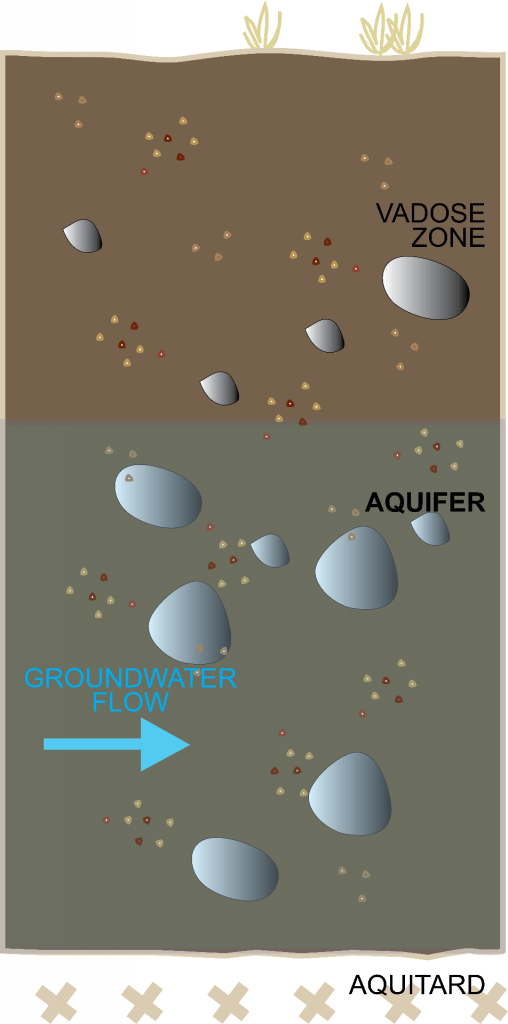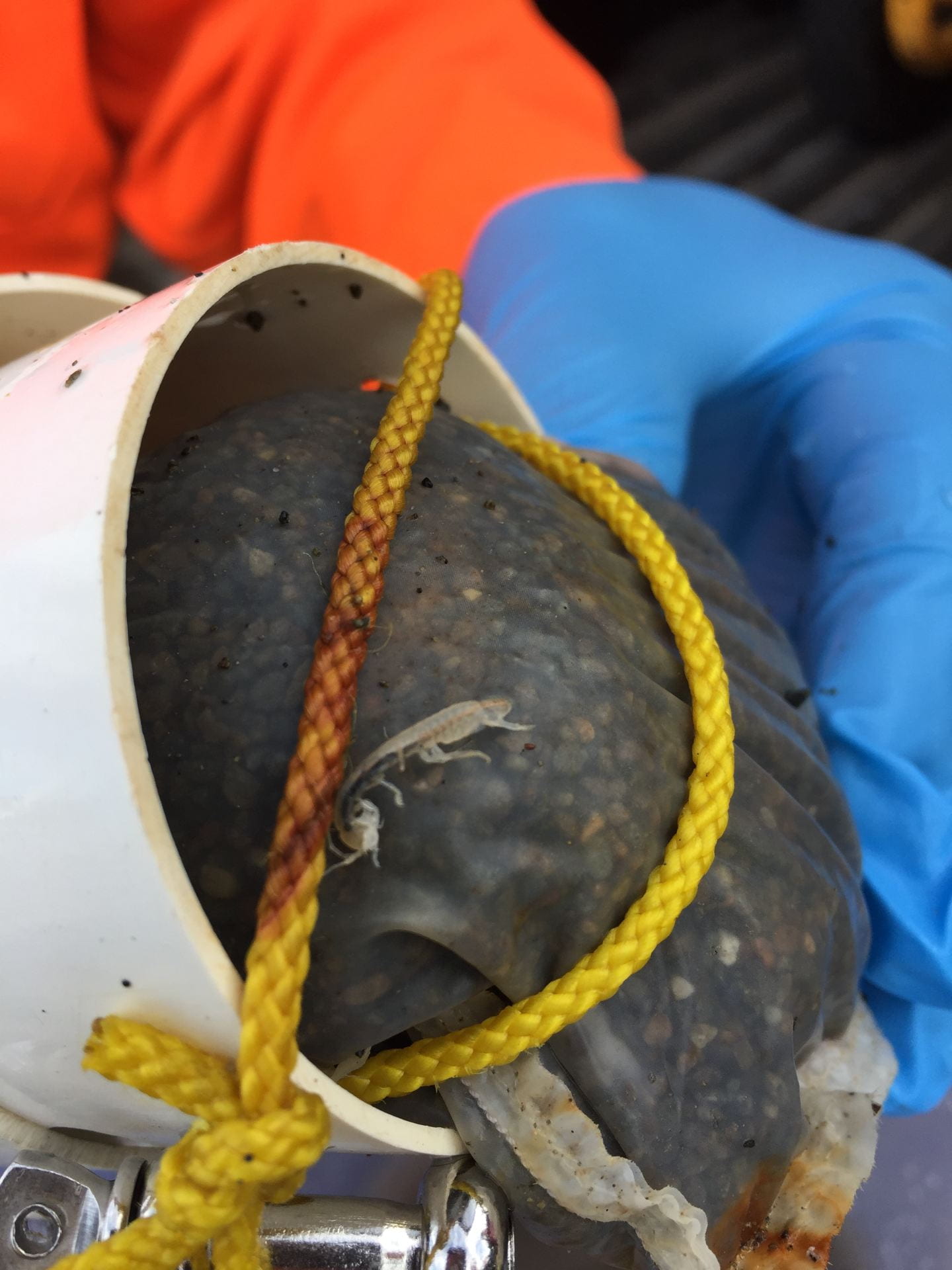Aquifers and Our Research
Aquifers
Aquifers are underground layers of rock or unconsolidated materials (such as sand, gravel or silt) through which groundwater flows. They are relied upon as a source of recharge for rivers, estuaries, lakes and wetlands, and as a source of water for human consumption.
Aquifers in Aotearoa
New Zealand has around 200 documented aquifers . These hold an estimated 711 billion cubic metres of groundwater, and support 35% of the nation’s water usage.
Unconfined aquifers (those that have direct contact with the atmosphere) hold approximately 96 percent of that total.
Collectively, these aquifers are an important source of water for drinking, agriculture and industry, and are therefore highly valuable for the economy. This nationwide groundwater resource has been valued at approximately $8 billion NZD.
The Issue
We have little understanding about the biological content and functioning of these subsurface ecosystems. This means we also do not have a good understanding of how groundwater biology, and more especially microorganisms, respond to and mitigate nationally and globally problematic agricultural pollutants, such as nitrate. High nitrate concentrations can have negative health implications for both aquatic ecosystems and human health. However, it can also be removed by microorganisms and returned to atmospheric N2 gas.
Our research
The main objective of this project is to improve our knowledge of poorly understood aquifer biology, and its impact on groundwater quality, by determining the:
Genetic and chemical content of aquifers
Diversity of microorganisms inhabiting a range of aquifers
Microbial metabolic processes controlling the fate of nitrogen
Diversity of stygofauna (larger organisms)



